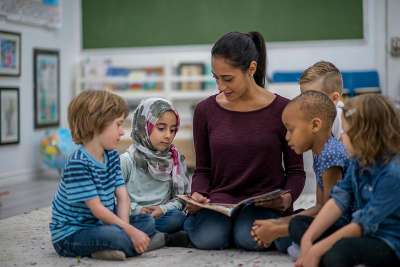Audio-Visual Presentation
In this format, you rely exclusively on the use of slides, movies, filmstrips, PowerPoint slides, photographs, illustrations, videos, or overhead transparencies. In contrast to a lecture, most of the information is presented visually, rather than orally.
Demonstration
In this format, students witness a real or simulated activity in which you use materials from the real world. These materials may include artifacts and objects used by individuals in a specific line of work; for example, microscopes (biologists), barometer (meteorologists), transit (surveyors), or word processing program (writers).
Observation
This format allows students to watch an event or occurrence take place firsthand. The only drawback is that sometimes unexpected and unplanned events happen over which you may have little control.
Field Trips
With field trips, you are able to take your students out of the classroom and into a new learning environment. (See Special Projects, Special Events). This learning environment usually lasts for several hours or an entire school day.
Round Robin
In this setting, each student has an opportunity to share some information or ideas in a small group format. Everyone participates equally and taps into the collective wisdom of the group.
Interviewing
This format may include the personal interview, in which one person talks with another person. It may also involve the group interview, in which several people talk with a single individual.
Brainstorming
Brainstorming can be a valuable instructional tool which you can incorporate into almost any lesson. Simply defined, it is the generation of lots of ideas (without regard for quality) about a single topic. This method is particularly appropriate at the start of a lesson to tap into the background knowledge students may or may not have about a topic.
Effective brainstorming is governed by four basic rules:
Generate as many ideas as possible—the more the better.
There is no evaluation of any single idea or group of ideas. There is no criticism about whether an idea is good or bad.
Zany, wild, and crazy ideas are encouraged and solicited.
Individuals are free to build upon the ideas of others.
Mental Imagery
Expert Opinion
Mental imagery is receiving considerable attention by classroom teachers at all levels and in all subjects because of its proven ability to promote positive learning experiences.
Mental imagery is the creation of pictures in one's mind prior to reading printed material. Mental imagery helps students construct “mind pictures” that aid in comprehension and tie together their background knowledge and textual knowledge. After images are created (and colored by a reader's experiences), they become a permanent part of long-term memory.
Mental imagery works particularly well when the following guidelines are made part of the entire process:
Students need to understand that their images are personal and are affected by their own backgrounds and experiences.
There is no right or wrong image for any single student.
Provide students with sufficient opportunity to create their images prior to any discussion.
Provide adequate time for students to discuss the images they develop.
Assist students in image development through a series of open-ended questions (“Tell us more about your image.” “Can you add some additional details?”).
Synthesis
One of the objectives of any lesson is to provide opportunities for students to pull together various bits of information to form a new whole or basic understanding of a topic. This process underscores the need for students to actually do something with the information they receive.
Small Group Discussions
Expert Opinion
Some teachers think small group discussions are nonproductive because no actual teaching takes place. In actuality, though, small groups are highly productive. They allow for the absorbsion of valuable material, a reflection on different points of view, and an informal means of assessing students' comprehension of material.
Here, the class is divided into small groups of two to four students. Each group is assigned a specific task to accomplish. The group works together, and members are responsible for each other. (See What Is Cooperative Learning, and What Does It Do? for additional information.)
Discussions are a useful strategy for stimulating thought as well as providing students with opportunities to defend their position(s). Your role in these discussions is that of a moderator. You can pose an initial question, supplemental questions when the discussion falters, or review questions for a group to consider at the end of a discussion. It's important that you not take an active role in the discussions, but rather serve as a facilitator.
Experimenting
Through experimenting, ideas are proved or disproved, and predictions confirmed or denied. Experimentation involves manipulating data and assessing the results to discover some scientific principle or truth. Students need to understand that they conduct experiments every day, from watching ice cream melt to deciding on what clothes to wear outside based on the temperature. In the classroom, they need additional opportunities to try out their newly learned knowledge in a wide variety of learning tasks.















